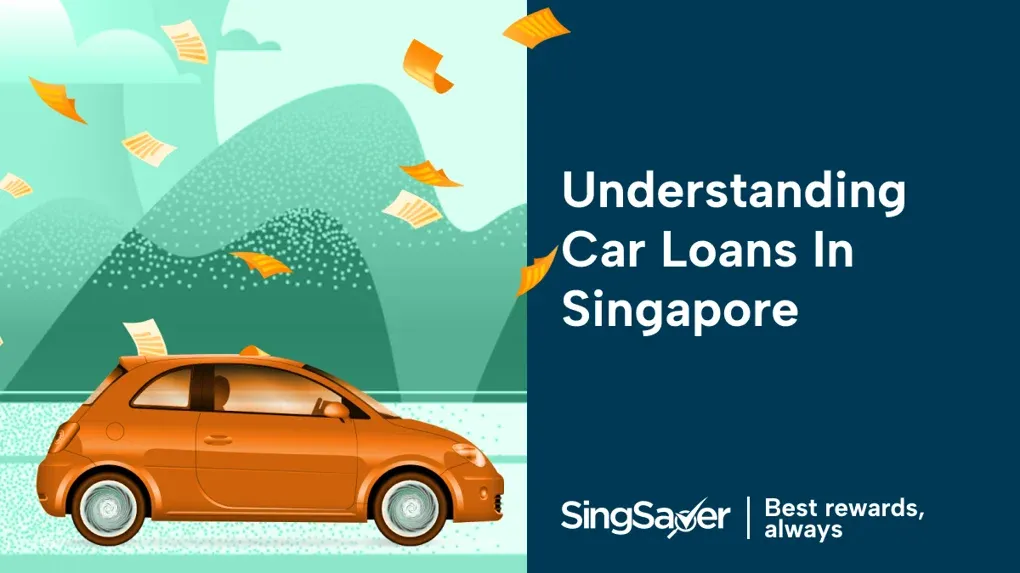How to Calculate a Car Loan Payment in Singapore (2025 Guide)
Updated: 31 Jul 2025
Written bySingSaver Team
Team

The information on this page is for educational and informational purposes only and should not be considered financial or investment advice. While we review and compare financial products to help you find the best options, we do not provide personalised recommendations or investment advisory services. Always do your own research or consult a licensed financial professional before making any financial decisions.
Buying a car in Singapore? Between sky-high prices and strict loan rules, figuring out how much you’ll actually pay every month can feel overwhelming. From understanding your car downpayment in Singapore to choosing the right loan, this guide breaks it all down — with real examples and trusted tools.
How to calculate your car loan payment
Use a car loan calculator
The easiest way to estimate your repayments is with a car loan calculator Singapore platforms provide. Reliable options include:
-
SGCarMart Car Loan Calculator
-
Toyota Singapore’s Car Financing Tool
-
Bank calculators from DBS, OCBC, and UOB
These tools let you adjust loan amount, interest rate, and tenure to view your monthly payment instantly.
Calculate manually
If you’d rather crunch the numbers yourself, here’s the formula:
Principal Loan × Interest Rate × Loan Tenure (in years) ÷ 100 = Total Interest
Example:
-
Loan: S$100,000
-
Interest: 2.8% p.a.
-
Tenure: 5 years
Total interest = S$100,000 × 2.8 × 5 ÷ 100 = S$14,000
Total repayment = S$114,000
Monthly payment = S$114,000 ÷ 60 = S$1,900/month
This method helps you assess affordability before applying.
» READ MORE: Best car loan interest rates in Singapore (2025)
How much can you borrow?
In Singapore, how much you can borrow depends on your car’s Open Market Value (OMV). Under Monetary Authority of Singapore (MAS) rules:
|
Vehicle OMV |
Maximum Loan Amount |
|
≤ S$20,000 |
Up to 70% |
|
> S$20,000 |
Up to 60% |
You can choose a loan tenure from 1 to 7 years. Longer loans mean smaller monthly instalments but more total interest paid.
Minimum downpayment rules in Singapore
In Singapore, you’ll need to make an upfront payment before financing the rest of the car. Depending on the car type and your financing terms, downpayments can range from 20% to 40% of the purchase price. New cars usually require a higher downpayment than used vehicles.
Your first ride made easy: The ultimate Singapore car buyer’s guide
Navigating Singapore’s car market can be overwhelming. This step-by-step guide breaks down everything from budgeting to financing, so you drive away confident and prepared.
MAS regulations (the legal minimum)
Here’s what the law says about car downpayment in Singapore:
-
30% minimum downpayment if the car’s OMV is S$20,000 or less
-
40% minimum downpayment if the OMV is above S$20,000
This applies to both new and used car downpayment in Singapore, and it must be paid in full, upfront, using cash or equivalent. No credit cards, additional loans, or instalment schemes allowed. This is a hard requirement for all standard car loans.
What about those zero-downpayment offers I see online?
A zero‑downpayment car in Singapore may seem enticing—but beware, it effectively means you’re borrowing 100% of the vehicle’s value, which is typically disallowed under MAS standard car loan rules. These financing plans are offered by third-party financiers via dealers, not through traditional bank loans that adhere to MAS caps on LTV.
The risks include:
-
Paying interest on the full vehicle price, which is considerably higher than typical 60–70% loans
-
Significantly increased total interest costs over the loan tenure
-
Greater risk of negative equity, especially if vehicle depreciation outpaces loan repayments
-
Less flexibility if you decide to sell or refinance early—you may owe more than the car’s value
They’re not considered standard car loan financing in Singapore, and do not comply with MAS lending guidelines. Proceed with caution.
» READ MORE: How to afford a car in Singapore?
Does TDSR apply to car loans?
Yes. The Total Debt Servicing Ratio (TDSR) applies to all personal loans in Singapore, including car loans. Your total monthly debt repayments — including mortgage, credit cards, and car instalments — must not exceed 55% of your gross monthly income.
If your car loan pushes you past that threshold, your loan application will be rejected or your approved amount reduced.
Downpayment factors to consider
Beyond MAS requirements, several real-world elements can influence how much you’ll actually need to fork out upfront.
Vehicle type and pricing
Higher-end or luxury cars often require a bigger downpayment. This is because lenders view them as higher-risk assets — they cost more and depreciate faster. Some dealers may even enforce stricter terms for those financing car loans in Singapore.
Loan tenure
Shorter loan tenures generally carry lower risk for lenders. As a result, opting for a shorter tenure may allow more flexibility in your downpayment — but your monthly instalments will be higher.
Financial standing
Your credit score, income, and existing debts can influence how strict lenders are with your financing package. A strong financial profile could help you secure a lower car loan Singapore interest rate, better repayment terms, or even slightly relaxed downpayment conditions.
Best petrol credit cards in Singapore 2025
Fuel up without burning through your wallet. These top petrol credit cards offer high cashback, bonus rewards, and exclusive sign-up gifts to help you save on every litre.
Where to get a car loan in Singapore
Banks
Banks like DBS, OCBC, UOB, CIMB, and others offer regulated, structured loan packages with fixed car loan Singapore interest rate options (typically around 2.68% to 3.5% p.a.).
Car dealerships
Dealers often offer:
-
Bank-arranged loans (they act as middlemen)
-
In-house financing (more flexible, but sometimes with higher rates)
Always compare total cost of borrowing, loan structure, and repayment terms across both options before committing.
» READ MORE: The 3 key types of car insurance
Final thoughts
Owning a car in Singapore is expensive — but with smart planning, it’s manageable.
To recap:
-
Use a reliable car loan calculator Singapore drivers trust
-
Understand the legal and practical rules behind car downpayment Singapore
-
Think twice before signing a zero downpayment car Singapore offer
-
Improve your credit score and savings habits to qualify for better terms
Frequently asked questions about car loan payment in Singapore
Car loan payments in Singapore can usually be made via GIRO, online banking, AXS stations, or cashier’s order. Most banks also allow you to set up automatic monthly deductions from your linked bank account.
You’ll need to pay at least 30% of the car’s price if its OMV is S$20,000 or less, and 40% if the OMV is above S$20,000, as mandated by MAS. This applies to both new and used cars.
Here’s how to make your car loan payment in Singapore:
1. Identify your car loan provider
Whether it's a bank or dealer-financed loan, confirm the lender managing your account.
2. Refer to your loan welcome letter or agreement
This document will typically include your loan account number, due date, and accepted payment methods.
3. Set up automatic GIRO deduction
Most banks allow you to arrange monthly GIRO payments—this ensures instalments are taken directly from your linked account with minimal effort
4. Pay manually via internet banking or mobile app
If you opt out of GIRO, you can make payments by initiating a funds transfer or bill payment in your banking portal or app, using your car loan reference or agreement number
4. Use AXS stations, e‑Station, or AXS app
Some lenders, like Standard Chartered or Hong Leong Finance, support loan payments through AXS: select “Loans”, choose your lender, then enter your reference details and payment amount
5. Visit the dealer or lender in person (if applicable)
For in‑house financing or dealership-based loans, you may need to pay via cashier’s order, cheque, or cash at the finance office or branch.
Confirm with your loan provider which payment options are supported to avoid missed payments or late fees.
Relevant articles
About the author
SingSaver Team
At SingSaver, we make personal finance accessible with easy to understand personal finance reads, tools and money hacks that simplify all of life’s financial decisions for you.
